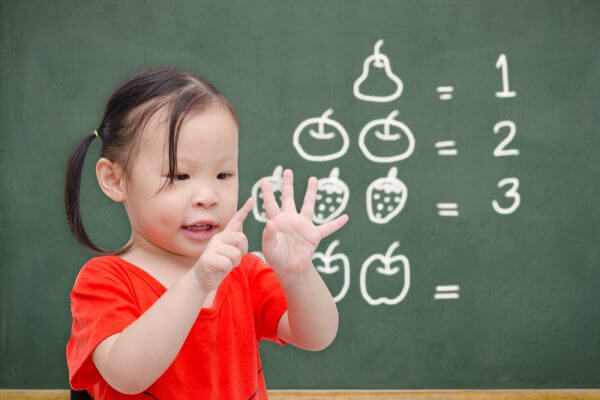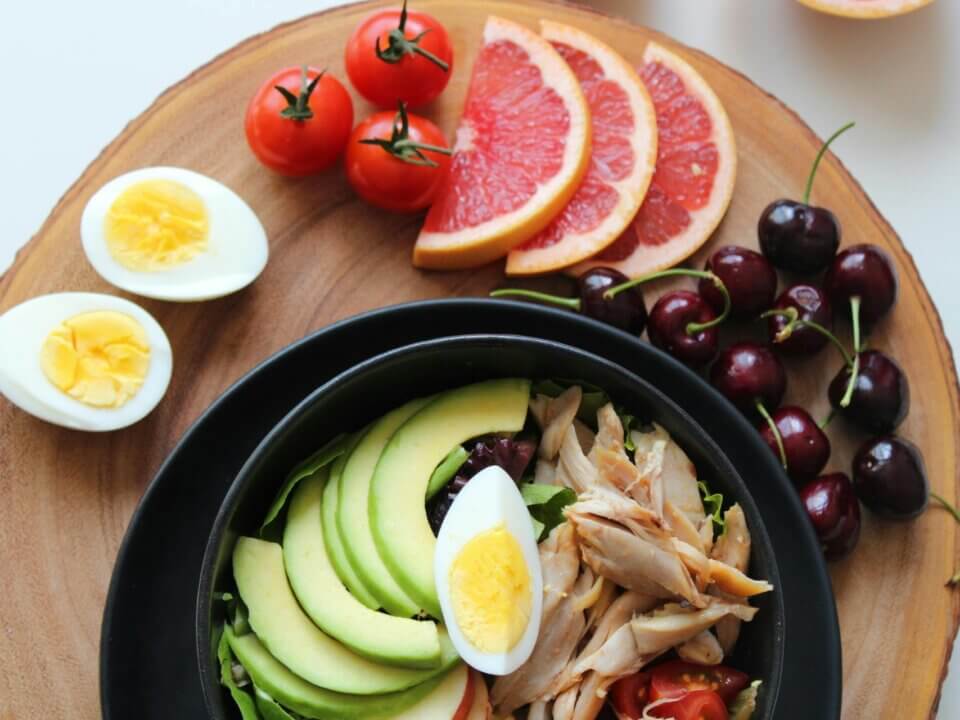How To Introduce Math Concepts to Preschoolers
Published on 9 March 2018 by Edu Aid | For Parents | Mathematics | Preschool

Math is a subject that helps us to make practical sense of the world around us. Can you imagine how the world can operate without numbers? Even the most illiterate person around needs to know his numbers! We see numbers on our clocks, on traffic lights, in lifts, on the SMRT map, on buses, on price tags, at our door fronts, on the measuring cup in the kitchen, etc. You get the drift. Therefore, the last place Math should be introduced to a preschooler would be from the paper or from a book. Math can be practiced from books. For example, if you need your child to practice his multiplication, you can make him do some sums in a book. However, the best way to introduce multiplication as an applicable concept as alive as you are must be done beyond paper and pencil. In this article, we will show you some ways to do justice to Math concepts by making them come alive beyond books.
Concept of Numbers
You don’t have to teach your preschooler what is “One”, and what is “Two”. These words don’t make sense to him at all. These words only have meaning when they are understood as part of a sequence of numbers. “One” precedes “Two”, and “Two” precedes “Three”. This is the standard way everyone in the world counts. There’s no other way. Therefore we should introduce numbers to young children through counting and not as individual words. This can start from the day your child is born (if you ever have the energy then). You can introduce counting to your child by counting sheep to put your child to sleep. When your child is learning to walk, you can count his steps. When you take the lift together you can direct his attention to the numbers on the lift to count frontward or backward. When crossing the road, you can read the numbers on the traffic light out loud to your child (in this situation the numbers would go backward usually). While pushing your child on the swing, you may count the number of times you push. When your child is hanging from the monkey bar at the playground, you may count how long he can hang. While climbing the stairs, you can count the number of steps with your child. If you do counting with your child frequently, your child will soon learn what numbers are all about, and be introduced from a very young age the importance of numbers in his life. By then, it will be easy to introduce the numerical and word “One” to your child and have him write down or spell it out. “One” now makes better sense to your child. It is the first number in his counting sequence. He knows it very well.
Concept of Measurement, Comparison and Estimation
The concept of measurement, comparison and estimation can be introduced while preparing meals, at meal times or even while playing at the beach! The kitchen is a great place to learn. Some parents advocate a kids-free kitchen. However, if your child has a decent level of self-control and obeys most rules in the house, it’s highly beneficial to allow him into the kitchen to watch you prepare the meals. Of course, this comes with the condition that your kitchen is kids-safe. If your oven is highly accessible to your child and is operating most of the time, you will have to make sure it doesn’t burn your child accidentally. In the kitchen, you can let your child watch you use the measuring cup to measure flour while baking. Your child can help you scoop the rice into the rice cooker, and count the number of cups required. Your child can watch you squeeze out some orange juice and measure the amount of juice you have. Your child can compare the sizes of different fruits!
At the dining table, your child can compare who has more food and who has less. Who has a bigger piece of chicken and who has a smaller one. Who drank more water and who drank less. Your child knows he doesn’t need to count the exact number of rice in each bowl to know who has more rice. He can look at all the bowls and estimate which bowl has the most amount of rice. His logical reasoning should also help him deduce who ate more rice and who ate less from the leftovers.
The beach offers a generous spread of sand and water for your child to explore concepts. Bring some pails and molds along so that your child can build something with the sand. Your child may build a bigger sandcastle and a smaller tower. He may dig a long tunnel and fill water in or create a little pond with some water. While playing at the beach, not only is he strengthening his concepts of measurement, comparison and estimation, he can also strengthen his spatial intelligence with his play.
Concept of Patterns and Shapes
Singapore is an extremely structured country in many aspects, and one of such is architecture. Therefore, it is one of the best places to learn patterns. Patterns are a huge theme in our architecture design, if you have not realized by now. We see patterns everywhere. In patterns, there is consistency and logic. Designs with patterns are not messy. They create a sense of safety – we have a logical expectation of what is coming next. There is a pattern. We see patterns on walls design, flooring layout, pillars and ceiling structures. Look around you with a keen eye and it won’t take long before you notice that the floor bricks are arranged in a pattern, the wall tiles are colored with a certain pattern, the ceiling to your walkway shelter has some pattern in the structure. You can point your child to these patterns you notice, so that your child starts seeing them as well. The more your child is exposed to patterns, the easier he is to spot them as he grows. As you introduce patterns, you can also take the opportunity to introduce shapes. Patterned shapes on architecture designs are usually squares, rectangles, triangles or diamond shapes. You can introduce circle and crescent to your child by looking at the moon, heart shape by observing some leaves (those close to heart-shaped), star shape by looking at star-fishes! 3-D shapes are found all over the home. Cylinder shaped bottles; cone shaped ice-cream cone, cubed boxes.
Concept of Addition, Subtraction, Multiplication, Division
You may have thought that, by now, your child should be moving from practical learning to doing sums on paper. This is far from the truth! Addition, subtraction, multiplication and division become meaningless to your child if you introduce these concepts from paper. Your child will think he is merely doing sums to score in Math, and won’t understand that these are very useful concepts that we all apply in real life.
Addition is the easiest among the four and should be introduced first. This can easily be introduced anywhere! Perhaps you spot some rented bikes parked around the playground. Get your child to count the number of bikes at one corner of the playground (let’s say 4), then get him to count the bikes at another corner (let’s say 2), and ask him how many bikes there are altogether. Do not expect him to do sums in his head. Guide him to find the answer by counting them all. He will tell you 6. Then, guide him by telling him that “4+2=6”. Do so by pointing at the 4 bikes and then at the 2 bikes while saying it. Get him to repeat this. Once he is familiar with this, you can repeat the same with him but instead of telling him “4+2=6”, ask him what is “4+2” after he has counted “4” and “2” and altogether. He should be able to then tell you “4+2=6”. This helps him understand what “+” is. It means altogether. At home, you can have him use his fingers to count. When you ask him what is “4+2”, he should intuitively push out 4 fingers from one hand and 2 from the other and count them altogether. Soon enough he would have memorized that 4+2=6. Just like any of us. When solving problem sums in the later years, any questions that involve the word “altogether” should hint him to add.
Subtraction is best introduced at the dining table, with food that your child can count, like chicken wings, chicken nuggets or fries. Grandpa had 4 nuggets in his bowl. He ate 2. How many nuggets does he have left? Get your child to count the leftovers on the bowl. Again, you need to reiterate “4-2=2”, so that your child understands what “-“ is. It means take away. While introducing the concept of subtraction at the dining table, you can introduce division too! It is never too early to introduce division, again with food that you can count. You can serve a huge dish of chicken wings (let’s say 24 wings) and get your child to divide the dish equally to 4 plates. After that, get your child to count how many chicken wings there are in each plate. Your child will say 6 if he does it correctly. After that, reiterate to your child “24/4=6”, and get him to repeat so that he understands when we use the word “divide”. Get your child to divide food as many times as you can first, because the first few times he may not be able to do it correctly. He needs to figure out a system to do it.
Multiplication is best taught outdoors when you see patterns and sets. For example, you see a row of pillars sets. Each pillar set has four smaller pillars, and you have repetitive sets of 4 pillars. These pillars can help your child learn the concept of multiplication. In essence, multiplication is an addition concept for identical sets. Get your child to tell you how many pillars there are in each sets. Then, say there is another set a few steps away, and count how many pillars there are. After that, verbalize the observation that there are 2 times your child says 4. Get your child to count 2 times of 4 pillars make how many pillars. Your child would say 8. Then, reiterate that “2X4=8”. After your child is comfortable counting 2 sets, get him to count three and four sets, etc. This may take some time for your child to understand. You may have to demonstrate the counting and getting to the answer for your child a few times before he gets it. You can make multiplication finally applicable in real life by asking your child how many pillars are required to build the walkway.
Conclusion
If your child is a preschooler or younger, you can start to introduce the above concepts to him now. You don’t have to wait until his reaches Primary school to introduce the concept of multiplication when the curriculum pushes out the multiplication table. By then, he will either find memorizing the table a total bore, or welcome the table with much enthusiasm because he understands how the concept of multiplication had helped him derive many answers before about his world. While your preschooler is young and free, make Math alive for him. Leave the doing of sums, practicing and memorizing to Primary School. For now, let him live Math so that he can understand it better next time, and excel. [Read: Is My Preschooler Prepared for Primary One?]





